UNITED STATES
SECURITIES AND EXCHANGE COMMISSION
Washington, D.C. 20549
__________________________________
FORM 8-K
CURRENT REPORT
Pursuant to Section 13 OR 15(d) of the Securities Exchange Act of 1934
Date of Report (date of earliest event reported): June 26, 2007
REHABCARE GROUP, INC.
(Exact name of Company as specified in its charter)
| Delaware | 0-19294 | 51-0265872 | |
| (State or other jurisdiction | (Commission | (I.R.S. Employer | |
| of incorporation) | File Number) | Identification No.) |
| | | | | | | | | | | |
| 7733 Forsyth Boulevard | |
| Suite 2300 | |
| St. Louis, Missouri | 63105 | |
(Address of principal executive offices) | (Zip Code) |
| | | | | | | | |
(314) 863-7422
(Company's telephone number, including area code)
Not applicable
(Former name or former address if changed since last report)
Check the appropriate box below if the Form 8-K filing is intended to simultaneously satisfy the filing obligation of the Company under any of the following provisions:
o Written communications pursuant to Rule 425 under the Securities Act (17 CFR 230.425)
o Soliciting material pursuant to Rule 14a-12 under the Exchange Act (17 CFR 240.14a-12)
o Pre-commencement communications pursuant to Rule 14d-2(b) under the Exchange Act (17 CFR 240.14d-2(b))
o Pre-commencement communications pursuant to Rule 13e-4(c) under the Exchange Act (17 CFR 240.13e-4(c))
Item 7.01 | Regulation FD Disclosure |
Beginning on June 26, 2007, RehabCare executives will make presentations at investor conferences to analysts and in other forums using the slides as included in this Form 8-K as Exhibit 99. Presentations will be made using these slides, or modifications thereof, in connection with other presentations in the foreseeable future.
Information contained in this presentation is an overview and intended to be considered in the context of RehabCare's SEC filings and all other publicly disclosed information. We undertake no duty or obligation to update or revise this information. However, we may update the presentation periodically in a Form 8-K filing.
Forward-looking statements have been provided pursuant to the safe harbor provisions of the Private Securities Litigation Reform Act of 1995. Forward-looking statements involve known and unknown risks and uncertainties that may cause our actual results in future periods to differ materially from forecasted results. These risks and uncertainties may include but are not limited to, our ability to consummate acquisitions and other partnering relationships at reasonable valuations; our ability to integrate acquisitions and partnering relationships within the expected timeframes and to achieve the revenue, cost savings and earnings levels from such acquisitions and relationships at or above the levels projected; our ability to comply with the terms of our borrowing agreements; changes in governmental reimbursement rates and other regulations or policies affecting reimbursement for the services provided by us to clients and/or patients; the operational, administrative and financial effect of our compliance with other governmental regulations and applicable licensing and certification requirements; our ability to attract new client relationships or to retain and grow existing client relationships through expansion of our service offerings and the development of alternative product offerings; the future financial results of any unconsolidated affiliates; the adequacy and effectiveness of our operating and administrative systems; our ability to attract and the additional costs of attracting and retaining administrative, operational and professional employees; shortages of qualified therapists and other healthcare personnel; significant increases in health, workers compensation and professional and general liability costs; litigation risks of our past and future business, including our ability to predict the ultimate costs and liabilities or the disruption of our operations; competitive and regulatory effects on pricing and margins; our ability to effectively respond to fluctuations in our census levels and number of patient visits; the proper functioning of our information systems; natural disasters and other unexpected events which could severely damage or interrupt our systems and operations; changes in federal and state income tax laws and regulations, the effectiveness of our tax planning strategies and the sustainability of our tax positions; and general and economic conditions, including efforts by governmental reimbursement programs, insurers, healthcare providers and others
to contain healthcare costs.
Item 9.01 | Financial Statements and Exhibits. |
| (d) | Exhibits - See exhibit index |
SIGNATURE
Pursuant to the requirements of the Securities Exchange Act of 1934, the company has duly caused this report to be signed on its behalf by the undersigned hereunto duly authorized.
Dated: June 26, 2007
By: /s/ Jay W. Shreiner
Name: Jay W. Shreiner
Title: Senior Vice President and
Chief Financial Officer
EXHIBIT INDEX
99 | Investor Relations Presentation in use beginning June 26, 2007. |
Exhibit 99

Investor Presentation
First Quarter, 2007
0
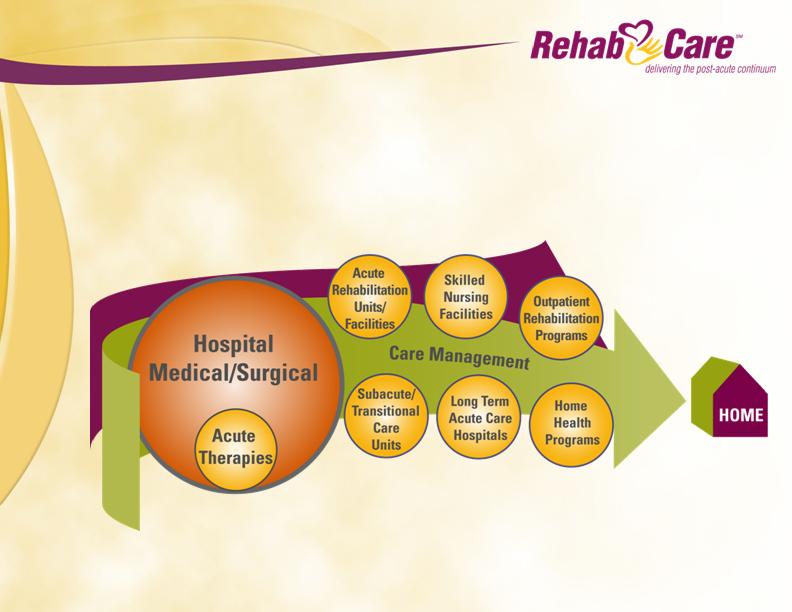
RehabCare's vision is to provide a clinically integrated continuum of
post-acute care resulting in people regaining their lives. That means
linking together our resources and clinical expertise in our various
settings to create a coordinated system that supports patients in their
transition from an acute episode to home.
Our Strategic Vision
1

What We Do
Skilled Nursing Facility-Based Rehabilitation Programs
1,146 programs – 7.6 million patient visits annually
Hospital-Based Rehabilitation Programs – 164 Total Units
Acute Rehabilitation Units
112 programs –44,000 discharges annually
Subacute/Transitional Care Units
17 units –131,200 patient days annually
Outpatient Rehabilitation Programs
35 units –1.1 million visits annually
Freestanding Hospitals
6 Inpatient Rehabilitation Hospitals*
256 Beds – 4500 discharges annually
3 Long-Term Acute Care Hospitals
186 Beds – 1600 discharges annually
Other Healthcare Services
Phase 2 – consulting services for acute care hospitals
Polaris Group - consulting services for long-term care facilities
VTA Management Services – therapist staffing for healthcare facilities and
schools in New York
*One minority owned
2
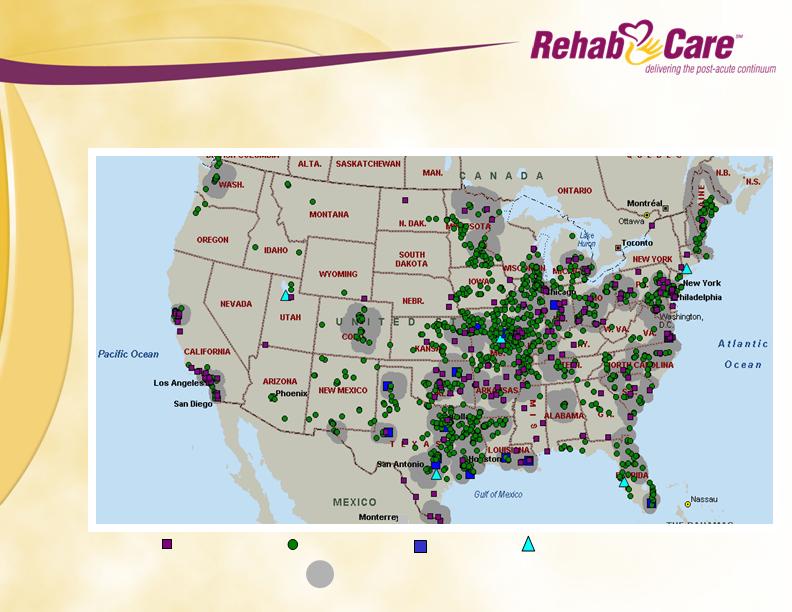
Where We Are
Over 1,300 locations servicing over 22,000 patient visits each day
Skilled-based
Freestanding
Other Healthcare Services
Hospital-based
87 Strategic Continuum Markets
3
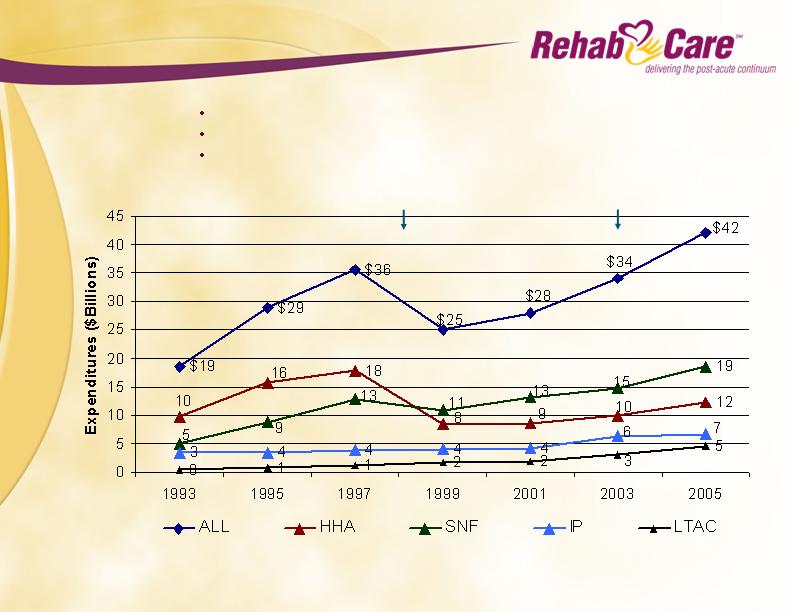
Medicare Reimbursement for
Post-Acute Services
Medicare reimbursement for post-acute services:
Totaled $42 billion in 2005, an increase of 68% since 1999
Projected $97 billion by 2014
Represents 13% of Medicare’s total spending
CMS contains costs by its PPS adjustments and regulations
HH & SNF PPS
IRF PPS
4
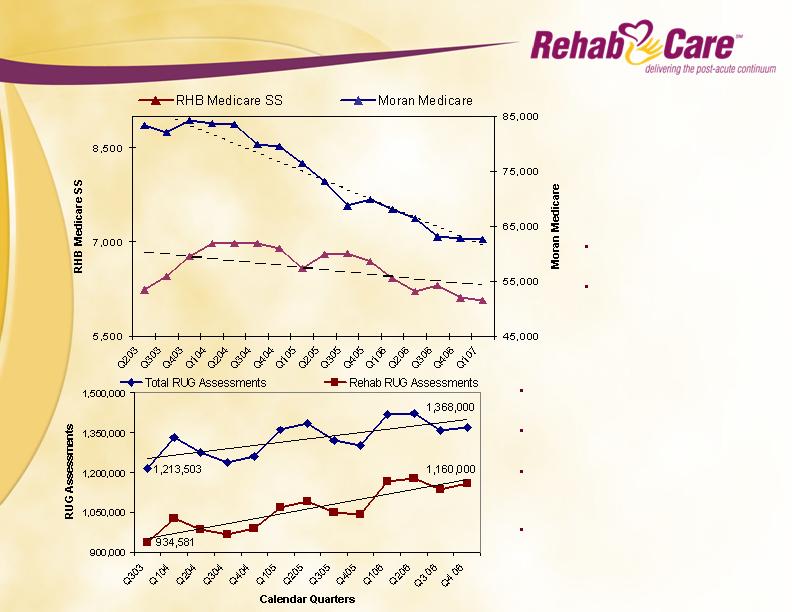
Our Revenues Follow Patient Care
Trends
From the May 2007 Moran
Report comparing the four
quarters ending Q1:2007 to
the four quarters ending
Q1:2004:
Moran facilities declined
23.5%
RehabCare facilities
decreased 6.6%
Since Q3/03, RUG assessments
nationally increased 12.7%
Rehab RUG assessments in that period
increased 24.1%
During the same period, the number of
skilled facilities nationally remained
relatively stable
The number of rehabilitation
assessments outpaced the overall
increase in total assessments
5
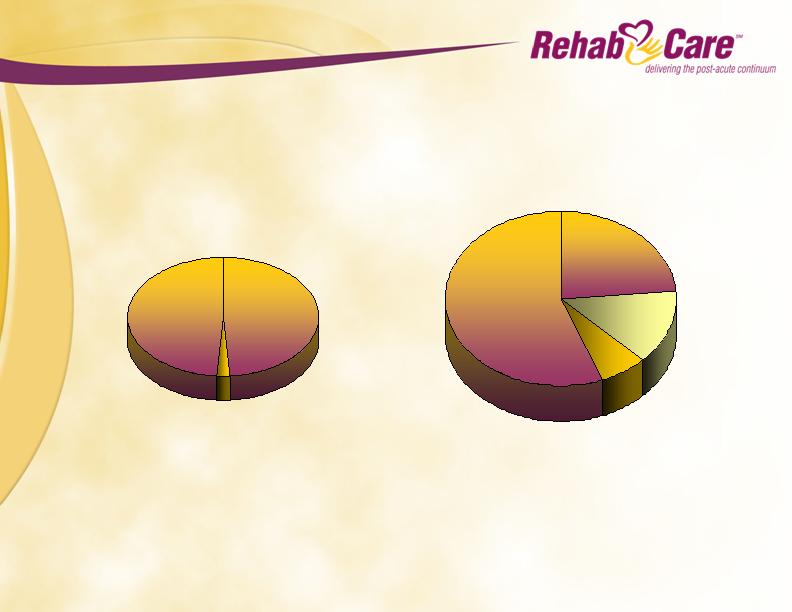
Hospital-Based
Rehabilitation Programs
(HRS Division)
$43.3M
SNF-Based
Rehabilitation Programs
(Contract Therapy Division)
$102.8M
1Q/07
Total Revenue $184.0 million
Other Healthcare
Services
$11.9M*
6%
24%
56%
Freestanding
Hospitals
(IRFs and LTACHs)
$26.0M
14%
Our Revenue Trends
Hospital-Based
Rehabilitation Programs
(HRS Division)
$47.8M
SNF-Based
Rehabilitation Programs
(Contract Therapy Division)
$52.5M
1Q/05
Total Revenue $102.4 million
Other Healthcare
Services
$2.1M*
2%
51%
47%
*Net of intercompany eliminations
6

Skilled Nursing Facility-Based
Rehabilitation
Largest Medicare post acute reimbursement setting
Growing care setting, in part due to 75% Rule
Lower operating margins require scale for better
economies and improve profitability
Acquisition of Symphony
Adds critical mass for selective markets; entry
into other markets
Adds significant therapist resources and client
relationships
Provides $10-14 million projected annualized
cost savings and operating efficiencies over 18
months – Q1 2007 run rate of $12.3 million
annualized cost savings
7

Hospital-Based Rehabilitation
Provides 3-5 year contractual relationships with host
hospitals and health systems with existing market
share and flow of patients
Remains highest margin business with cash flows to
fund other businesses
Expect 3-5% historical growth to return after full
implementation of 75% Rule
8

Freestanding Hospitals
Provides anchor operations in continuum markets
Continues strategy of working with host hospitals and
health systems with existing market share and flow of
patients
Establishes ownership position and reduces risk of
contract loss
Provides a vehicle for expansion of bed capacity
Enhances control over quality and competency in
clinical and medical matters
9

Freestanding Hospitals
Joint Venture Strategy
Definitive Agreements – Previously Announced
Austin -
Phase 1 - 20-bed IRF – open third quarter 2007
Phase 2 - replace 20-bed IRF with 36-bed IRF and 40-bed
LTACH – projected open 2009
North Kansas City – 35-bed LTACH – open early 2008
St. Louis - 35-bed IRF – open early 2009
Other Development Projects
Howard Regional – 26-bed LTACH – open late 2007
Peoria – 50-bed LTACH – open late 2008
In addition to these 6, there are several letters of intent and
additional opportunities under review
10
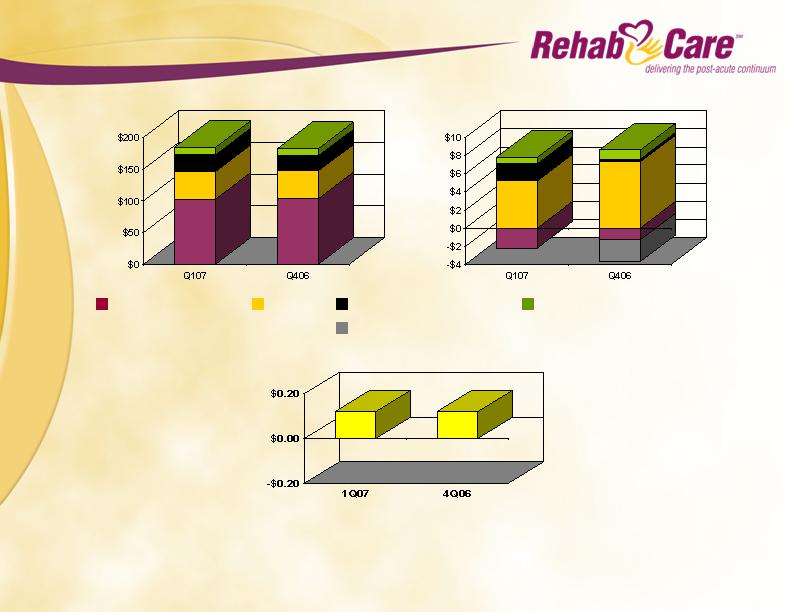
1Q/07 Versus 4Q/06
$184.0
$182.2
Revenues (in millions)
Operating Earnings (in millions)
$5.5
$4.7
Consolidated Earnings Per Share
$0.12
$0.12 (1)
Contract Therapy
HRS
Freestanding Hospitals
Other Healthcare Services
(1) Includes a pretax software development impairment charge in Q4 2006 of $2.4 million, or $0.09 per diluted share after tax
Unallocated Costs (1)
11

Sources
Cash flows from operations - $8.8 million
Uses
Capital expenditures $1.3 million, principally
information systems
Paid down $7.1 million in long-term debt
Debt Outstanding
$107.0 million outstanding debt under $175 million
revolving credit facility at 3/31/07
$6.5 million in subordinated debt related to
acquisitions at 3/31/07
Q1 2007 Sources and Uses Of Capital
12

Inpatient Rehabilitation Facilities - 75% Rule
Limits the type and number of rehabilitation patients cared for in an acute hospital setting
Transitions to 65% and 75% in July 2007 and 2008, respectively
Proposed legislation in Senate and House freezes threshold at 60%. Support
continues to grow
CMS willing to reconsider the 75% Rule comorbidity exception set to expire after
7/1/08
In the current 60% compliance period, HRS division operating at average 63%
compliance; Freestanding division operating at average 59% compliance
LTACH - 25% Rule
Restricts HIH LTACHs to less than 25% of their admissions from host acute care hospital
Final rule issued on 5/1/07 by CMS covers all LTACHs with phase-in over three years
for cost report years starting 7/1/07; mitigation strategies expected to substantially
eliminate the estimated operational impact
Expect Q2 2007 impairment of $4.5-$5.0 million for grandfathered New Orleans
LTACH intangible asset
Skilled Nursing Facility Part B Therapy Caps Autoexception
Expires on 12/31/07. Congressional action required for change/extension
2008 Market Basket Payment Changes
IRFs - 3.3% increase less estimated outlier payment and other adjustments of 0.9%
LTACHs - 3.2% increase less estimated coding practices adjustment of 2.5%
SNFs - 3.3% increase
Medicare Reimbursement Initiatives
Impacting Rehabilitation Services
13

Expectations for the Future
Contract Therapy Division
Return to 5-6% operating margins in 2008
HRS Division
Modest growth in discharges and stable operating
margins during 2007
Freestanding Hospitals Division
EBITDA margins at mature facilities of 17–19%
One rehab hospital and one LTACH opened in
2007
Other Healthcare Services
Continued growth in revenue and earnings in 2007
14
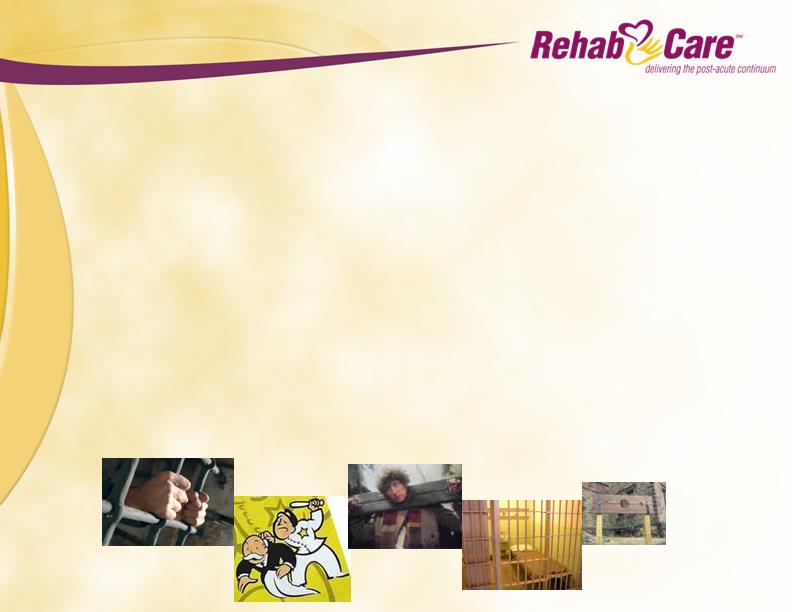
Safe Harbor
Forward-looking statements have been provided pursuant to the safe harbor provisions of the Private
Securities Litigation Reform Act of 1995. Forward-looking statements involve known and unknown
risks and uncertainties that may cause our actual results in future periods to differ materially from
forecasted results. These risks and uncertainties may include but are not limited to, our ability to
consummate acquisitions and other partnering relationships at reasonable valuations; our ability to
integrate acquisitions and partnering relationships within the expected timeframes and to achieve the
revenue, cost savings and earnings levels from such acquisitions and relationships at or above the
levels projected; our ability to comply with the terms of our borrowing agreements; changes in
governmental reimbursement rates and other regulations or policies affecting reimbursement for the
services provided by us to clients and/or patients; the operational, administrative and financial effect
of our compliance with other governmental regulations and applicable licensing and certification
requirements; our ability to attract new client relationships or to retain and grow existing client
relationships through expansion of our service offerings and the development of alternative product
offerings; the future financial results of any unconsolidated affiliates; the adequacy and effectiveness
of our operating and administrative systems; our ability to attract and the additional costs of attracting
and retaining administrative, operational and professional employees; shortages of qualified
therapists and other healthcare personnel; significant increases in health, workers compensation and
professional and general liability costs; litigation risks of our past and future business, including our
ability to predict the ultimate costs and liabilities or the disruption of our operations; competitive and
regulatory effects on pricing and margins; our ability to effectively respond to fluctuations in our
census levels and number of patient visits; the proper functioning of our information systems; natural
disasters and other unexpected events which could severely damage or interrupt our systems and
operations; changes in federal and state income tax laws and regulations, the effectiveness of our tax
planning strategies and the sustainability of our tax positions; and general and economic conditions,
including efforts by governmental reimbursement programs, insurers, healthcare providers and others
to contain healthcare costs.
15
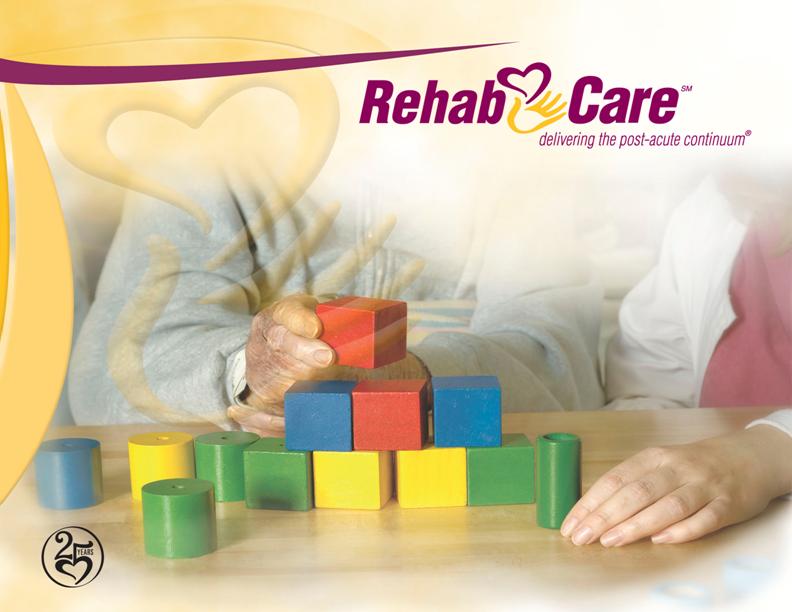
Investor Presentation
First Quarter, 2007
16
















